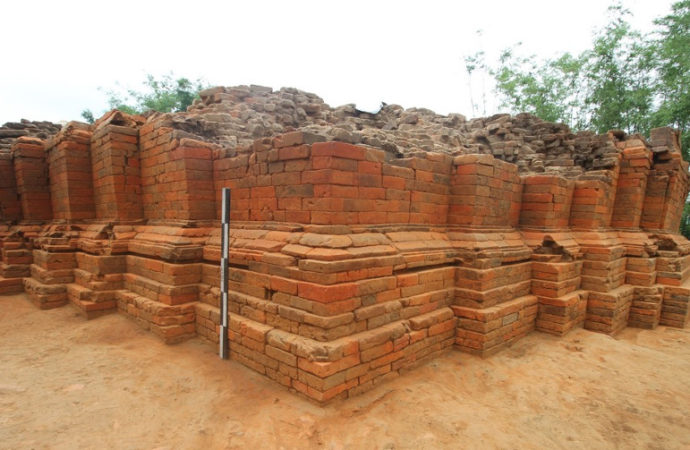The team stated that this is the only such temple in Bangladesh, with the characteristic of Kalinga architecture of the 11th and 12th century eastern India. The excavators also found a Shankha, a Sudarshana Chakra, a mace and a part of the idol’s foot adorned in garland.
Excavation team chief JU Assistant Professor Dr Shadhin Sen said the temple is divided into two parts, adding that “This is the first Navarath temple in Bangladesh. Earlier a Pancharath [five-faceted] temple was found in Dinajpur’s Nababganj,”
The team had spoken to Indian archaeologist Dipak Ranjan Das who had remarked that the upper portion of the temple was similar to the Siddheswara Shiva temple in Bankura, West Bengal.
Das claimed that Claudine Bautze-Picron, an expert of East Indian iconography, has identified the idol recovered from the eastern part of the temple as that of Mohini, the Vishnu Avatar. “According to her, this is the first stone-made Mohini idol in the eastern subcontinent, which leads us to reconsider the history of this region.”
In Hindu mythology, Mohini is the only female Avatar of the god Vishnu, who appears in the Samudra Manthan myth. The goddess is worshiped widely in South and West India. Even though the team is planning to cover the temple with soil for its preservation, as it is a standard practice for archaeological preservation, the locals are demanding that the temple be open to the public for worship.

